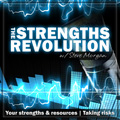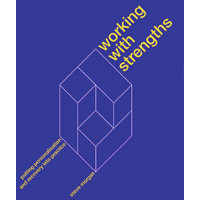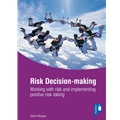Strengths Assessment Tools & Guidelines
 Thursday, November 11, 2010 at 3:48PM
Thursday, November 11, 2010 at 3:48PM Click below to download this form as a PDF.
PDF: Strengths Assessment tool: for developing working priorities and care/support planning
To read the report above you will need free software called Adobe Reader. This software can be downloaded here.
Guidelines for developing strengths working
Click here to download these guidelines as a PDF document.
Purpose
To provide guidance for encouraging the identification of strengths as an essential part of all assessments in practice across the local services. Reflecting the need for a flexible approach that is individually tailored to service users needs on a case-by-case basis. It is intended to be a 'method of working' that supports client-led practice, not a service driven need for auditing standards. A strengths assessment tool may help the process, but is not considered essential for ensuring a unique picture of the person is being developed through a unique process. Strengths working forms a radically different basis with which to resolve problems and work with risk.
Who is it for?
- Everyone who comes into contact with all services should have a balanced assessment that includes recognition of their 'strengths and abilities', not just a summary of 'problems'.
- All service users should have an assessment of their strengths at least in a process of completion, documented in whatever way is most appropriate to ensuring they strongly influence the on-going work of the team.
- Wants, aims, and aspirations are important anchors to drive plans forward, to clarify what resources are needed from whom in order to achieve them, and to identify what barriers or difficulties may need to be overcome.
When is it used?
- From the first point of referral, direct contact and thinking about a person determined to be in need of the local services.
- It is not a specialist assessment only to be drawn on in special cases.
How is it used?
- There is no single way of doing it, or documenting it; but the outcome should be a positive inventory of achievements, resources and aspirations individualised to the experience of the person themselves.
- In many cases a tool may simply act as the prompt for this aspect of assessment to take place, and to influence decisions in plans.
- 'Strengths working' is a continuous process that develops over time. It is not something that is done to someone, but rather an outcome of mutual dialogue. Circumstances change, as may the service user's aspirations; therefore the assessment is not fixed, and new facets of a person continuously emerge.
- The ultimate aim is for the assessment to be completed collaboratively, with or without an example of a form being introduced into the conversations. Paperwork in meetings can have a habit of formalising the situation, and thus getting in the way of the intended purpose.
- In rare instances, the whole process could be described to the service user, and where appropriate, a strengths assessment format left with them to ponder and complete in their own time. This may then form a basis for the service user to lead a subsequent discussion of their strengths and aspirations with the practitioner.
- The assessment is best conducted in an informal, conversational manner, rather than a structured interview. It is best conducted so far as is possible on the client's own 'territory' and in places where the user feels comfortable, rather than in formal service or institutional settings (e.g. the service user's home).
- It develops at each service user's pace and comfort level, and adapts to change.
- As 'strengths working' will be developed in response to the individual's circumstances, it is not relevant to set a standard time period for monitoring when it is completed and reviewed. Some assessments will be completed relatively quickly, and can reasonably be reviewed on a regular basis e.g. 6-monthly timescales. Some assessments will take many months or years to build up, and therefore do not fit a regular review cycle.
Structure of the process
- The assessment is focused on gathering information relevant to a range of 'life domains' e.g. housing, finance, health, occupation, social relationships, cultural and spiritual beliefs. Therefore, it should paint a holistic picture of the service user's life.
- It should be a positive, hopeful, and constructive process - the act of looking at strengths, possibilities and motivations is in itself constructive.
- It provides the essential positive information and resources needed to work constructively with risk.
- The format fits well with the local training on WRAP (Wellness Recovery Action Plan), and with Brief Solution Focused Therapy.
 guidelines,
guidelines,  strengths,
strengths,  tools in
tools in  Strengths Approach
Strengths Approach 





